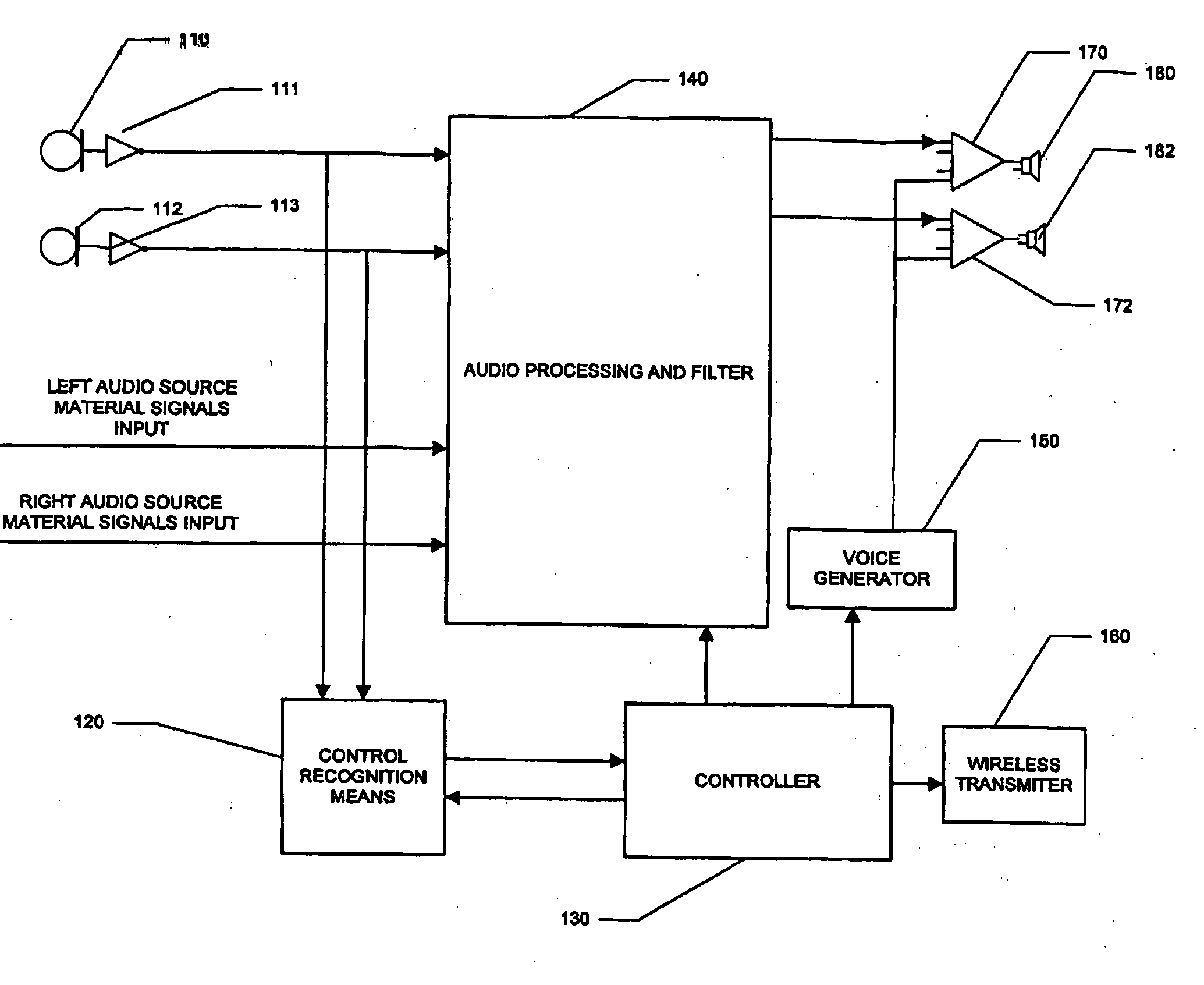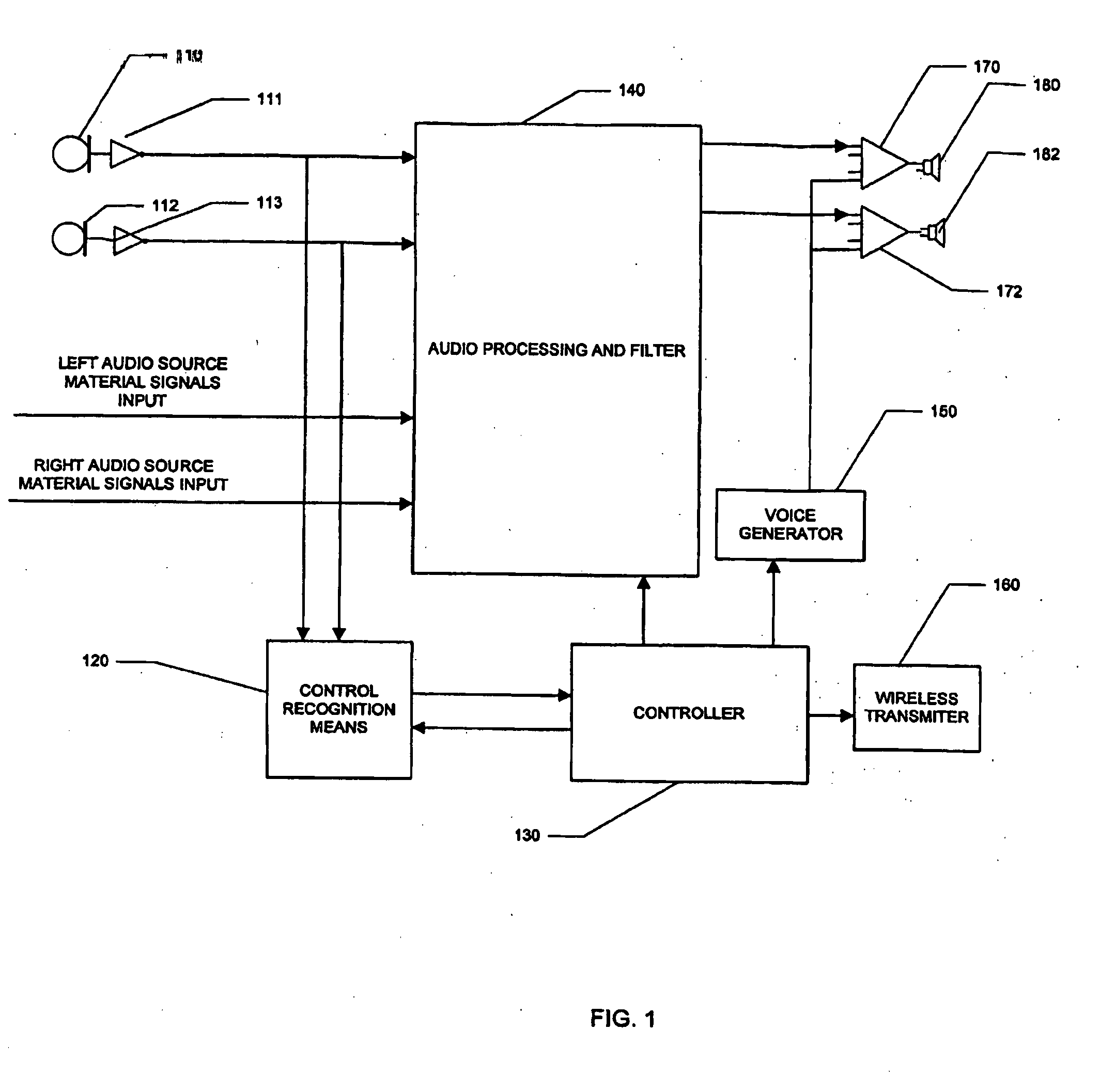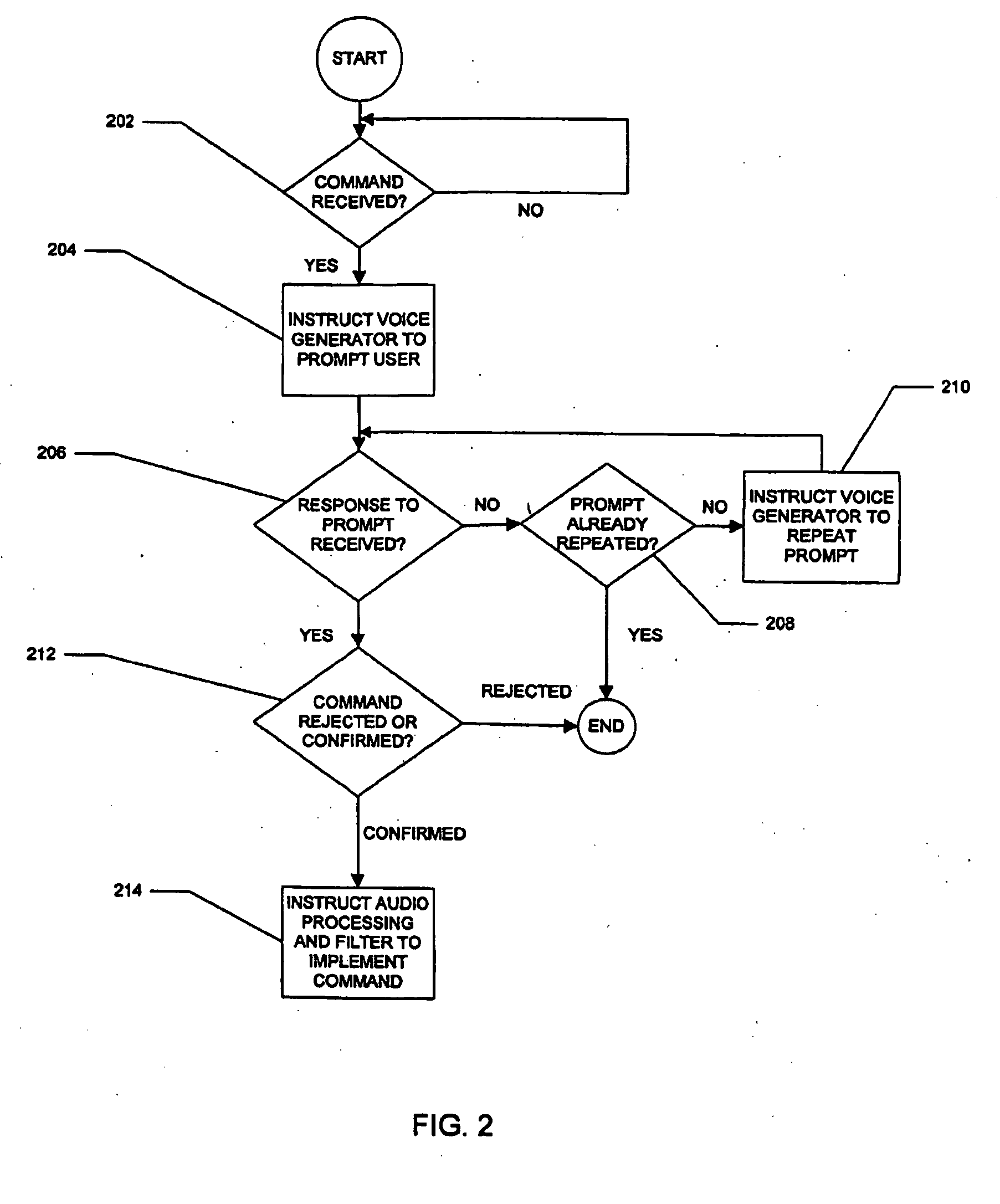Method and apparatus for controlling a headphone
a headphone and headphone technology, applied in the field of headphones, can solve the problems of poor visual and tactile feedback of adjustment, user wearing the headphone more uncomfortable, and the operation of the headphone becomes even more difficul
- Summary
- Abstract
- Description
- Claims
- Application Information
AI Technical Summary
Benefits of technology
Problems solved by technology
Method used
Image
Examples
Embodiment Construction
[0015]FIG. 1 is a block diagram illustrating a headphone system according to an embodiment of the invention. Left noise sensing microphone 110 and right noise sensing microphone 112 detect signals, and in particular provide analog ambient noise signals to amplifiers 111, 113, respectively. The amplified ambient noise signals are provided to control recognition means (CRM) 120. CRM 120 determines if the noise signals have a specific, or particular, characteristic to determine if a user input signal is received. CRM 120 detects a user input signal, generated in response to user action, maps the user signal to a command, and sends the command to a controller 130. Controller 130 decodes the command and causes the headphone to operate in accordance with the command. The operation of the headphone may include changing a characteristic of sound output by the headphone. The characteristic may include volume, treble, bass, and / or selection or feature of active noise reduction filters.
[0016]C...
PUM
 Login to View More
Login to View More Abstract
Description
Claims
Application Information
 Login to View More
Login to View More - R&D
- Intellectual Property
- Life Sciences
- Materials
- Tech Scout
- Unparalleled Data Quality
- Higher Quality Content
- 60% Fewer Hallucinations
Browse by: Latest US Patents, China's latest patents, Technical Efficacy Thesaurus, Application Domain, Technology Topic, Popular Technical Reports.
© 2025 PatSnap. All rights reserved.Legal|Privacy policy|Modern Slavery Act Transparency Statement|Sitemap|About US| Contact US: help@patsnap.com



